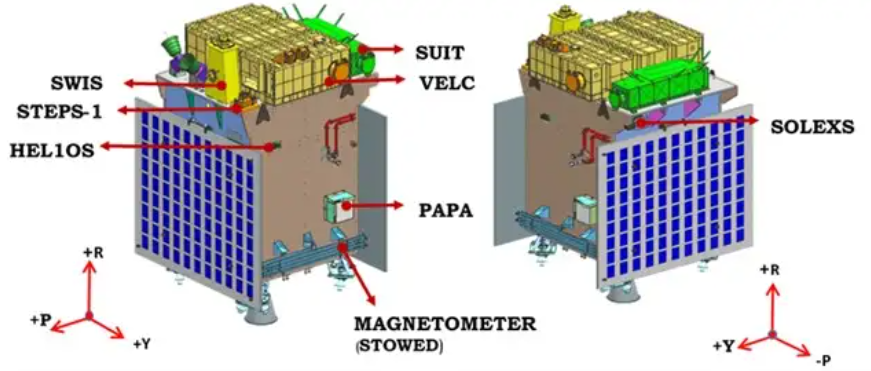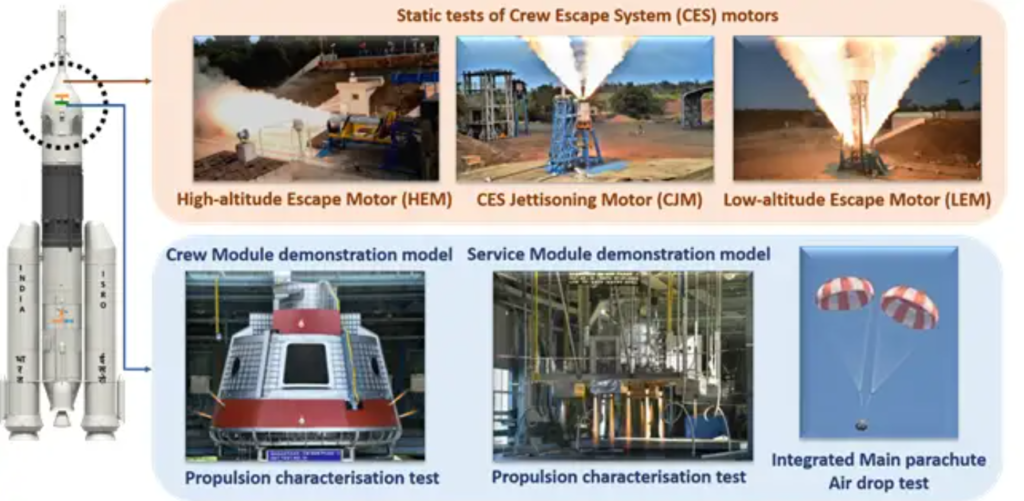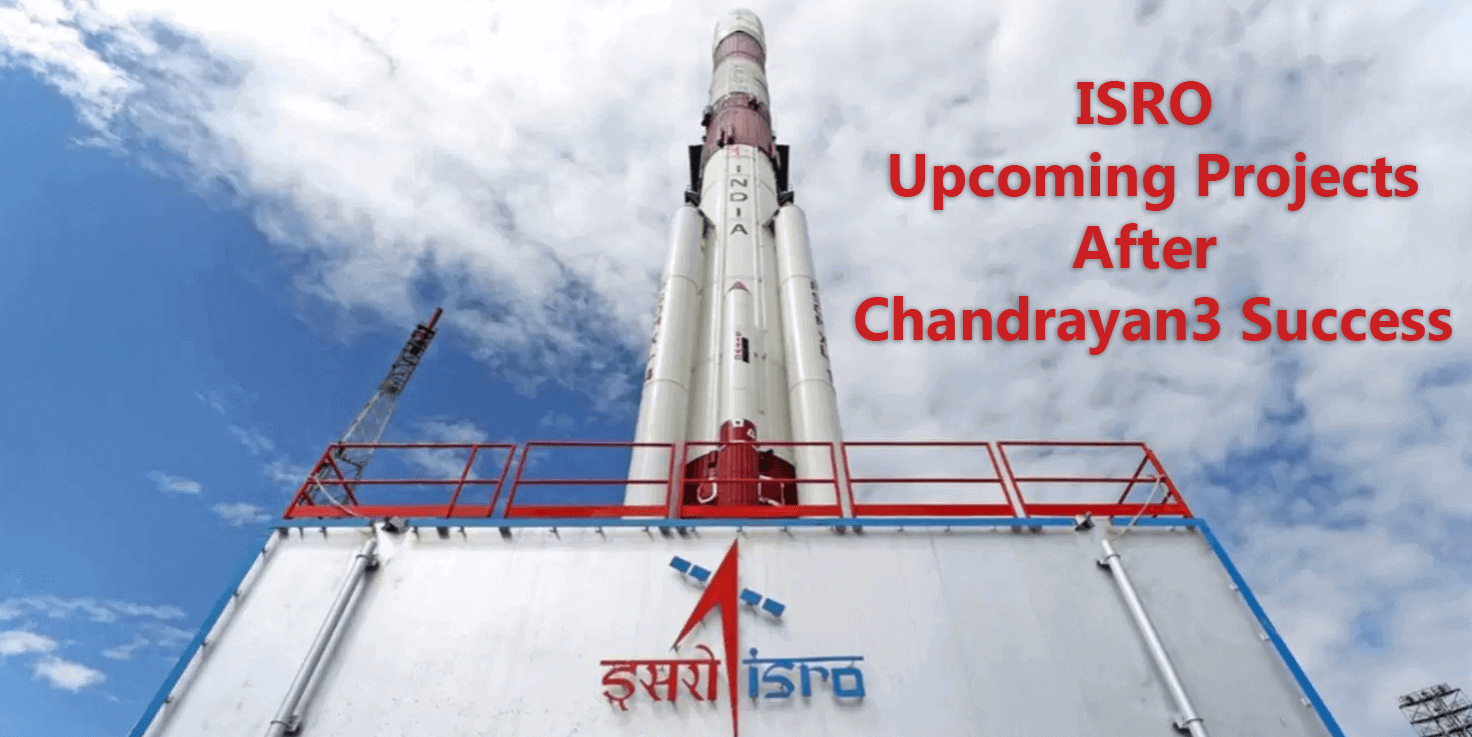The Indian Space Research Organization (ISRO), following the success of Chandrayaan-3, is continuing its ambitious mission by planning enhanced interplanetary expeditions, satellite deployments, and technical improvements.
Here are the upcoming projects of ISRO, as mentioned officially on their website.
Aditya L1
India’s next space-driven mission isn’t so much for a planet, yet rather it’s for the most brilliant star (as seen from Earth). ISRO has declared that it will send off the Aditya-L1 space apparatus into space to concentrate on the Sun. Aditya-L1 mission will be the country’s most memorable sun oriented mission that will be sent off toward the beginning of September.
The parts of Aditya L1 payloads are supposed to give the most urgent information to comprehend the issue of coronal warming, coronal mass launch, pre-endlessly flare exercises and their qualities, elements of room climate, spread of molecules and fields and so on. The total cost of the Adiya-L1 solar mission is expected to be around Rs 378 crore.

It will have 7 payloads
- Visible Emission Line Coronagraph (VELC)
- Solar Ultraviolet Imaging Telescope (SUIT)
- Solar Low Energy X-ray Spectrometer (SoLEXS)
- High Energy L1 Orbiting X-ray Spectrometer (HEL1OS)
- Aditya Solar wind Particle Experiment (ASPEX)
- Plasma Analyzers Package For Aditya (PAPA)
- Advanced Tri-axial High-Resolution Digital Magnetometers
Major Objectives of Aditya-L1 Mission
- Information on the Coronal Heating and Solar Wind Acceleration.
- Information on initiation of Coronal Mass Ejection (CME), flares and near-earth space weather.
- Information on coupling and dynamics of the solar atmosphere.
- Information on solar wind distribution and temperature anisotropy.
Aditya L1 mission, a mission to the Sun will be launched in the 1st week of September. ISRO Chief S Somanath confirmed about this development during an interview with ANI on the upcoming ISRO missions.
#WATCH ISRO chief S Somanath on Aditya L-1 and Gaganyaan mission
— ANI (@ANI) August 24, 2023
"Aditya mission to the Sun & it is getting ready for launch in September. Gaganyaan is still a work in progress. We will do a mission possibly by the end of September or October to demonstrate the crew module &… pic.twitter.com/9LVoWMJHX3
XPoSat
XPoSat (X-beam Polarimeter Satellite) is India’s originally committed polarimetry mission to concentrate on different elements of brilliant galactic X-beam sources in outrageous circumstances. The space apparatus will convey two logical payloads in a low earth circle. The XPoSat would assist us with learning significantly more about space flags that are given by dark openings, neutron stars, dynamic cosmic cores.
XPoSat payloads
POLIX
POLIX is an X-ray Polarimeter for astronomical observations in the energy band of 8-30 keV. The payload is being developed by Ramam Research Institute (RRI), Bangalore in collaboration with U R Rao Satellite Centre (URSC). POLIX is expected to observer about 40 bright astronomical sources of different categories during the planned lifetime of XPoSat mission of about 5 years. This is the first payload in the medium X-ray energy band dedicated for polarimetry measurements.
XSPECT
XSPECT is mounted on the XPoSat and is capable of quick timing and superior spectroscopic resolution in soft X-rays. XSPECT can enable long-term monitoring of spectral state changes in continuum emission, changes in their line flux, and changes in their line profile by taking advantage of the extended duration observations needed by POLIX to quantify X-ray polarization.
Nisar
ISRO has a space mission as a team with the Public Air transportation and Space Organization (NASA). The low-earth-circle (LEO) observatory mission will plan the whole globe in 12 days and give spatially and transiently reliable information for learning changes in Earth’s environments, ice mass, vegetation biomass, ocean level rise, groundwater and regular hazards (volcanoes, tsunamis, earthquakes, volcanoes and landslides).

NISAR mission is assessed to cost around Rs 12,296 crore. The Satellite will probably be sent off in January 2024 from the Satish Dhawan Space Center at Sriharikota in Andhra Pradesh.
ISRO announces
— ISRO (@isro) July 28, 2023
NISAR Utilization Programme,
a chance to access & analyze data from the 🇺🇸🇮🇳NASA–ISRO Synthetic Aperture Radar (NISAR) satellite mission.
NISAR offers high-resolution imaging & aims to study Earth's ecosystems, cryosphere, solid earth science, and coastal ocean… pic.twitter.com/P7F1QBxFpa
SPADEX
ISRO will also launch an experimental mission called SPADEX.
SPADEX or Space Docking Analysis expects to create and develop the advancements required for orbital meeting, docking, and arrangement flying. The outcome of the SPADEX mission will prepare for future ISRO missions that require docking capacities, for example, the human spaceflight program and the in-space satellite adjusting mission.
Gaganyaan
Gaganyaan project visualizes an exhibition of human spaceflight capacity by sending off a group of 3 individuals to a circle of 400 km for a 3-day mission and bringing them back securely to earth, via arriving in Indian ocean waters.

The project is accomplished through an optimal strategy by considering inhouse expertise, experience of Indian industry, intellectual capabilities of Indian academia & research institutions along with cutting edge technologies available with international agencies. The prerequisites for Gaganyaan mission include development of many critical technologies including human rated launch vehicle for carrying crew safely to space, Life Support System to provide an earth like environment to crew in space, crew emergency escape provision and evolving crew management aspects for training, recovery and rehabilitation of crew.
The Gaganyaan mission places a high priority on maintaining public safety. Numerous new technologies, including engineering systems and human-centered systems, are being created and realized in order to guarantee the same.
Crew Training for the Gaganyaan
The Bengaluru-based Astronaut Training Facility offers classroom instruction, physical fitness instruction, simulator instruction, and flight suit instruction. Academic courses, Gaganyan Flight Systems, familiarization with microgravity through parabolic flights, aero-medical training, recovery and survival training, mastery of flight procedures, and training on crew training simulators are all covered by the training modules. Yoga, periodic flying practice, and aero medical training are also a part of the course.
